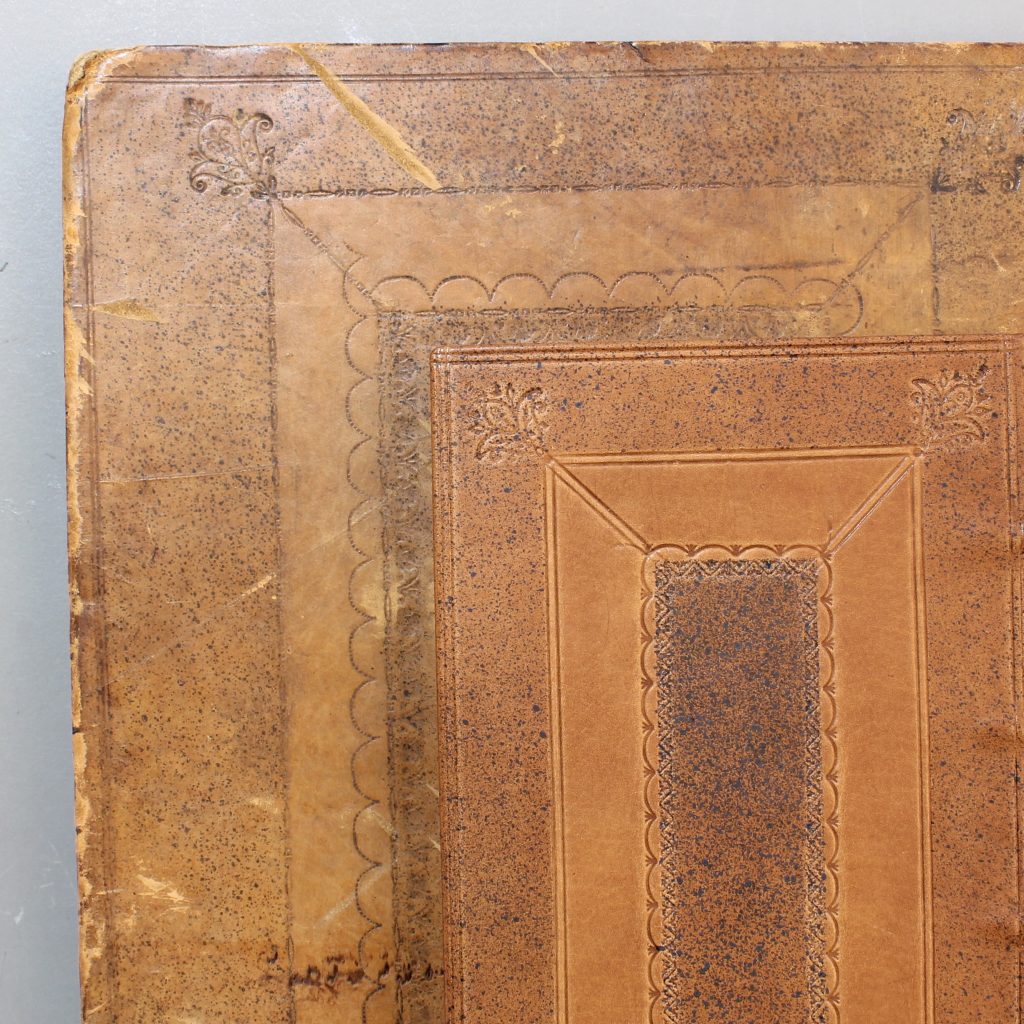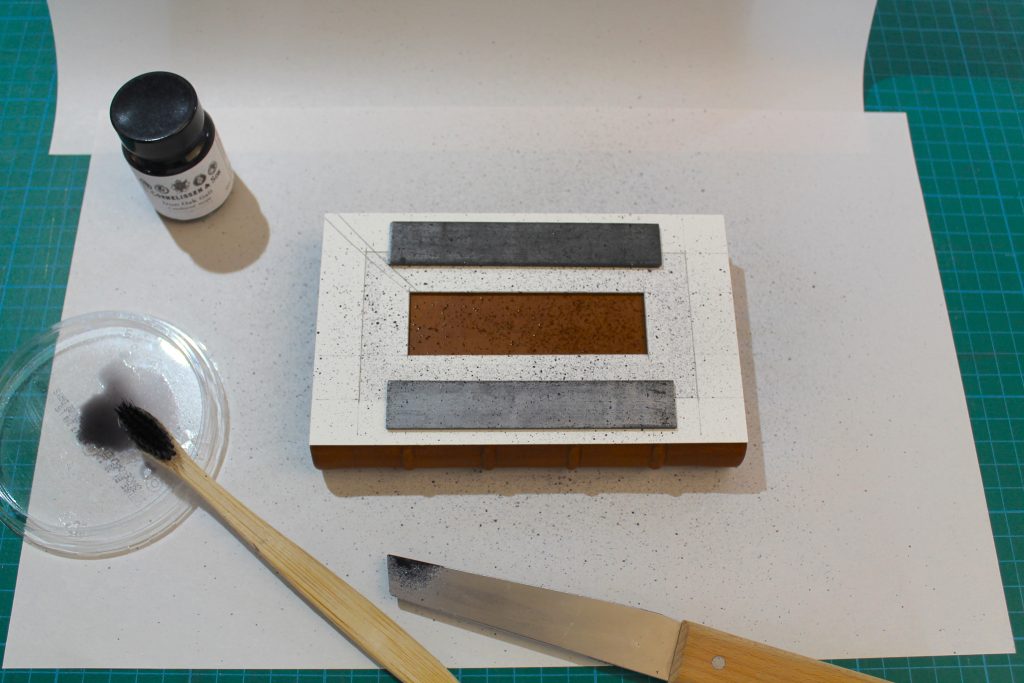I was recently commissioned to bind an early eighteenth century book in a contemporary style and took the opportunity to explore Cambridge panels in a little more detail. I was inspired by conversations with Trevor Lloyd, and decided to follow his method of getting new rolls made from rubbings of books of the period.[1] I used some historic examples from my own collection for reference (see below), and followed the methodology outlined in Nick Colishaw’s 2010 article.[2] Overall, I was pleased with the results of my blind-tooling and am now convinced that new tools are the way forward.[3]

One part of the process which proved more of a challenge was the sprinkling. The tooth brush method worked well giving a fine mist; however, initial efforts still didn’t look quite right. I found that the leather dye used was smudging – a big problem if moisture is later applied to the book – something that would be necessary with traditional gold tooling. I experimented with Selladerm leather dye diluted in IMS, but got best results with iron-gall ink.[4] Iron-gall ink sprinkling has a similar look/feel to examples from the period and has parallels with the traditional copperas (ferrous sulphate) method, as they are both ferrous based dyes. Iron-gall ink has an advantage over the copperas method in that it is simple and it also avoids having to wipe the leather over with a solution of salts of tartare; and once dry it doesn’t move if dampened. The ink darkens as it oxidizes so is initially quite pale when applied; therefore, some judgment is needed to anticipate the final colour.

[1] My tools were made by http://www.bookbindesigns.co.uk
[2] Nick Cowlishaw (2010). The Cambridge Panel A Step-by-step Tutorial. Bookbinder: The Journal of The Society of Bookbinders, Vol. 24. www.societyofbookbinders.com/publications/bookbinder/
[3] For a video on gold tooling by Trevor Lloyd see: www.allaboutbookbinding.com
[4] L. Cornelissen & Son, iron-gall ink (Iron Oak Gall: A mediaeval recipe) www.cornelissen.com
Arthur Green, July 2020

Hi Arthur,
Interested to read this blog post about the Cambridge Panel design.
I too have been trying to decorate a book in this style, using Fiebing’s spirit-based dyes. I found the dye came off on my fingers when handling the book and especially on the non-sprinkled parts 🙁 I then tried to ‘fix’ the dye using Fiebing’s Resolene, but it seems to have made the leather rather resistant to the blind tooling.
Did you have to use any fixative for the iron gall ink? Does it smudge it you rub dampen the leather before tooling. Did the iron gall ink have any impact on the leather’s capacity for blind tooling?
I would be interested to hear of your experience.
Thanks,
John